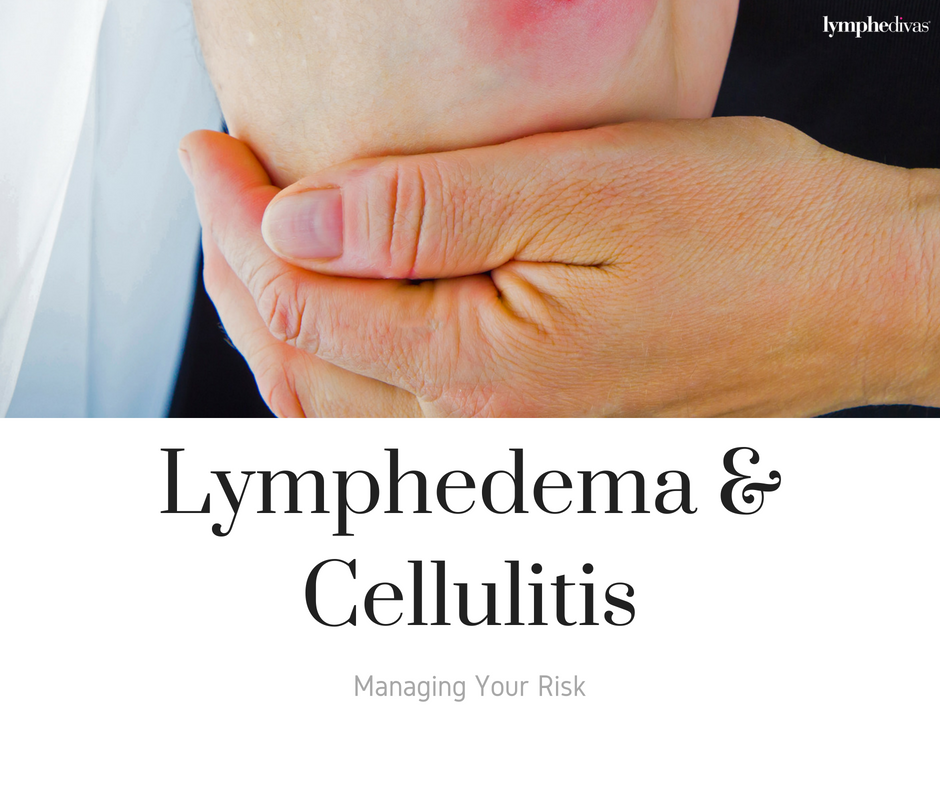
This blog post is for informational purpose only and should not be considered medical advice. If you suspect that you may have cellulitis, please contact your physician.
If you have lymphedema or are at risk for lymphedema, it is crucial to be aware of an infection called cellulitis. Studies show that there is a definite relationship between lymphedema and cellulitis and that incidence of cellulitis in limbs affected by lymphedema is higher than would be expected. An infection of this nature can be severe unless it is identified and addressed early on, so knowing the symptoms and when to see a medical professional is especially important.
What is cellulitis?
Cellulitis is a bacterial infection of the deeper layers of the skin, typically, but not always, caused by Streptococcus or Staphylococcus bacteria.
Who is at risk for cellulitis?
Anyone that gets a crack, cut, scrape or any disruption of the skin that can allow bacteria to enter the body is at risk for cellulitis. Other risk factors include prior cellulitis infections, obesity, lymphatic damage, and immune deficiencies such as cancer, diabetes, and HIV/AIDS. These factors all combined together make those with cancer-related lymphedema to be particularly at-risk for cellulitis.
Why are lymphedema patients (and those at-risk) prone to cellulitis?
There is a dependent relationship between lymphedema and cellulitis. Cellulitis causes widespread lymphatic damage which can result in secondary lymphedema, and in turn, lymphedema leads to increased risk and occurrence of cellulitis. This cycle often means that infections of this type can increase the severity of lymphedema and may result in a hospital stay.
What are the signs and symptoms of cellulitis?
- Localized redness, swelling, warmth, tenderness, and pain
- Flu-like symptoms such as fever and chills (not always present)
If you think you may have cellulitis, please consult your physician as soon as possible.
How is cellulitis treated?
Mild forms of cellulitis are treated with oral antibiotics, intravenous antibiotics may be introduced in severe cases or if oral antibiotics are ineffective. Topical antibacterial ointments cannot treat cellulitis because they do not penetrate deeply enough, however, if you do have any open wounds it is important to take proper external care to ensure that no further bacterial organisms are introduced. In the case of lymphedema related recurrent cellulitis (two or more infections annually), a prophylactic oral antibiotic may be used.
What steps can lymphedema patients take to avoid cellulitis?
Studies suggest that bacteria can condense in poorly draining lymphatic tissue which can result in cellulitis, therefore, the most effective step for reducing chances of cellulitis is to increase lymphatic drainage through exercise, compression therapy (such as compression garments and multi-layer bandaging), elevation, manual lymphatic drainage (MLD) massage, and pneumatic compression.
If you suspect that you may have cellulitis, please contact your doctor as soon as possible. Although cellulitis can be successfully treated, negligence to report symptoms can cause a widespread infection which can result in irreparable damage and morbidity.